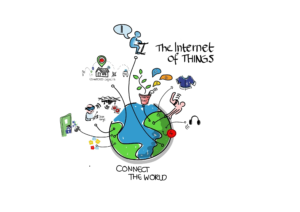How Technology Is Transforming Education in the Modern World

Technology is transforming education in the modern world, reshaping how students learn and how teachers instruct. From personalized learning paths to immersive virtual experiences, technology’s impact on education is profound and multifaceted. This article will delve into the various ways technology is revolutionizing education, exploring its benefits, challenges, and the future it promises. We’ll examine the use of educational technologies, analyze the advantages and disadvantages, and address how educators can effectively integrate these technologies into their classrooms. This comprehensive guide will offer insights into technology’s impact on different learning styles, explore effective learning management systems, and delve into the future of education in a tech-driven world. This article covers: innovative learning approaches, the role of educational technology, and how to integrate technology seamlessly into modern classrooms.
The Rise of Technology in Education
1.1 Personalized Learning Experiences
Technology enables tailored learning paths, adapting to individual student needs and paces. Learning platforms and software can assess students’ strengths and weaknesses, customizing content and exercises to optimize learning outcomes. This individualized approach addresses the diverse needs of students, catering to varying learning styles and pace. Tools like Khan Academy and Duolingo provide personalized learning paths tailored to each student’s progress and learning style, leading to more effective comprehension and retention of material. Educational apps and platforms provide personalized feedback, adapting to the individual student’s learning pace and needs. This ensures the student isn’t left behind, and can advance at a comfortable and relevant pace.
1.2 Enhanced Accessibility and Inclusivity
Technology breaks down geographical barriers, offering educational opportunities to students in remote areas or with disabilities. Online courses, virtual classrooms, and digital resources extend access to learning, fostering inclusivity and equity. Accessibility features, such as text-to-speech software and screen readers, cater to diverse learning needs and create a more inclusive learning environment for all students. Online learning platforms and resources level the playing field by removing barriers imposed by physical location, financial situations, and time constraints. This increased accessibility can lead to more diverse learners and an increased engagement in the educational field.
Innovative Teaching Strategies
2.1 Interactive Learning Platforms
Interactive learning platforms using simulations, virtual reality (VR), and augmented reality (AR) foster deeper engagement and understanding of complex concepts. VR experiences, like virtual field trips to historical sites or simulations of scientific processes, bring abstract learning to life. Augmented reality overlays digital information onto the real world, enriching the learning experience for a broader array of students. Gamification, or incorporating elements of game design into learning activities, makes learning more enjoyable and engaging, motivating students to participate actively. This method has proven highly successful in improving student motivation and engagement in the learning process. With the addition of educational games, learning can become an enjoyable experience rather than a monotonous undertaking.
2.2 Leveraging Digital Resources
Digital resources, such as online libraries and databases, provide easy access to information, fostering research and critical thinking skills. Students can explore diverse perspectives, analyze data, and engage in deeper learning. Open educational resources (OERs) offer free, high-quality learning materials and support educators and students, fostering equitable access to quality education.
Challenges and Considerations
3.1 Digital Divide and Equity Issues
The digital divide, or unequal access to technology and internet connectivity, presents a significant challenge. Students from disadvantaged backgrounds may lack the necessary resources to fully participate in technology-enhanced learning. Bridging this gap through initiatives like providing internet access and educational technology to underserved communities is crucial for ensuring equitable access to quality education. Schools and communities should work together to provide students from low-income backgrounds with appropriate equipment and access to high-speed internet access. This ensures that no one is left behind, and that educational opportunities are available to every student.
3.2 Maintaining Student Engagement and Focus
Sustaining student engagement and focus in online learning environments requires careful design and implementation. Teachers should create interactive and engaging lessons to maintain student interest and prevent disengagement. Strategies like frequent breaks, interactive activities, and meaningful tasks should be incorporated in the daily schedule to improve engagement.
Future Trends in Educational Technology
4.1 Artificial Intelligence (AI) Integration
AI-powered tools can personalize learning, provide instant feedback, and automate administrative tasks, increasing efficiency and effectiveness in the educational system. AI-powered tutors can adapt to individual learning styles and provide targeted support to help each student succeed in the modern learning environment. Personalized feedback and adaptive learning capabilities make AI a potentially very valuable addition to the education sector.
4.2 Personalized Learning Paths with Analytics
AI-driven analytics in educational technology will provide insights into learning trends, fostering data-driven decisions for curriculum design, instructional strategies, and improving student outcomes.
Related Post : Cloud Computing in 2024 Latest Advancements and Applications
The Impact on Educators
5.1 Adapting Pedagogical Approaches
Teachers must adapt their pedagogical approaches to effectively integrate technology in the classroom. This involves acquiring new skills in using educational technology, learning how to design and deliver online courses or blended courses, and becoming proficient in using learning management systems and technology to enrich their lessons. Adapting to the rapidly changing educational landscape with new technological tools and platforms is key to providing effective and adaptable educational environments. Professional development opportunities are crucial for equipping educators with the skills they need to effectively integrate technology into their teaching.
5.2 Developing Digital Literacy Skills
Integrating technology in education means helping students develop digital literacy skills. Educators need to foster a healthy relationship with digital tools, teach students how to evaluate online resources critically, promoting responsible digital citizenship to navigate the digital world safely and effectively. This responsibility falls upon both the students and the educators.
In conclusion, technology is revolutionizing education, fostering personalized learning experiences, and empowering both educators and learners. The future of education is inherently intertwined with technological advancements. Embrace these changes, adapt your strategies, and prepare your students for a future powered by technology to fully harness the potential of this dynamic and transformative learning environment. Ready to embark on this technological journey with your students? Explore the resources linked below and dive deeper into the evolving landscape of education in the modern world!
Share this content:














Post Comment